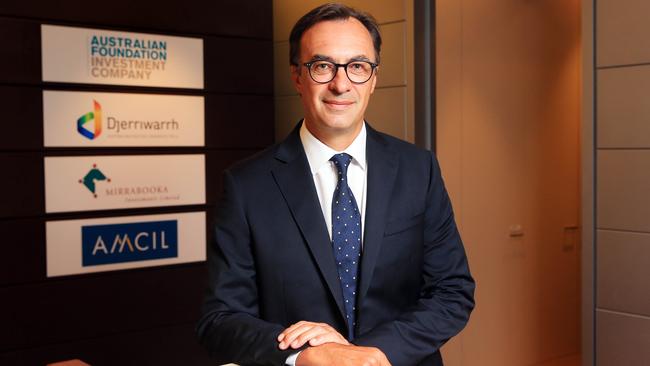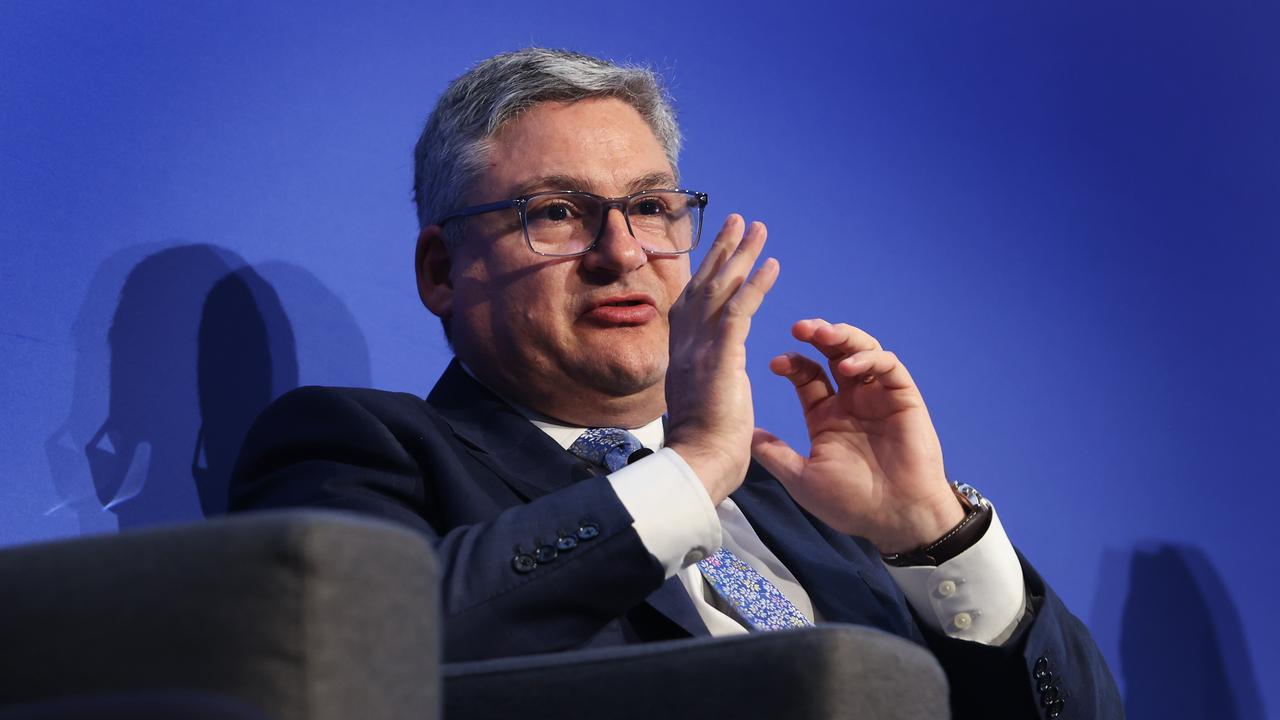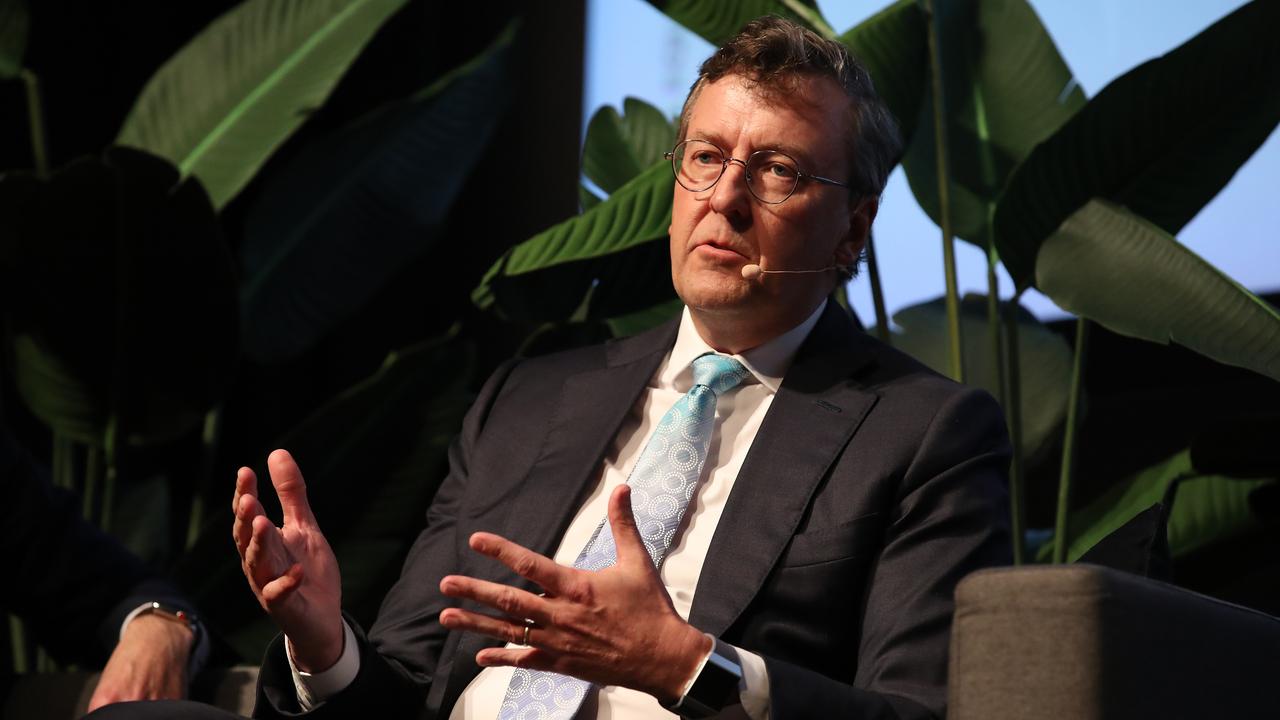Australian Foundation Investment Company feels dividend income pain
A strategic shift has proved a drag on AFIC’s dividend income streams, as its half-year profit plunged 39pc.

A strategic shift toward companies with higher growth prospects has dragged on the Australian Foundation Investment Company’s dividend income streams, the $7bn listed investment company revealed on Monday as it posted a 39 per cent plunge in profit for the six months through December.
AFIC managing director Mark Freeman, meanwhile, cautioned that the major concern ahead of earnings season was the prospect of volatility caused by companies failing to meet elevated expectations.
“When you’ve got these very high levels, it means you get a lot of volatility around earnings results. That’s the big concern in the market; it’s had a strong run with high PEs so if anyone disappoints in their result or outlook, it’s going to be ‘look out’. Just look at NIB — that’s an example of what could happen,” Mr Freeman said.
Health insurer NIB on Monday trimmed its annual profit outlook following a rise in claims across its underwriting business lines. It now expects to hand down an underlying operating profit of a minimum $170m the year through to June, down from its prior forecast of a minimum $200m.
Commenting on the recent performance of the S&P/ASX200, Mr Freeman described the 6 per cent gain in January as “stunning” and said the lack of value meant it was hard to find good companies to invest in at the right price.
“I've been around long enough to know that if you get a good old-fashioned bull market, they can go way beyond what people think. You just don’t know [when it will end]. We just keep talking about how we’re in good companies but we're probably finding it harder to allocate that fresh money,” he said.
The $7bn AFIC has for some time been transitioning away from financials and reducing the number of companies in its portfolio to focus on quality businesses with a competitive advantage.
“This has delivered a very satisfactory portfolio performance despite not being in some of the more speculative sectors of the market,” AFIC said in an update to shareholders.
The LIC’s portfolio rose 5.4 per cent for the six months to December compared with the S&P/ASX 200 Accumulation Index, which gained 3.8 per cent over the same period. On a one-year basis, the fund returned 25.5 per cent, franking included, versus the index’s 25.4 per cent.
“The dividend cuts from three of the four major banks, combined with a reduction in the proportion of our portfolio in financials, has put a short-term drag on our dividend income streams as many of our new investments have lower yields.
“We believe the move to stocks with a better growth profile should enhance the potential for dividend growth in the medium to long term, particularly as bank dividends are expected to remain stagnant,” AFIC said.
Over the last four years, AFIC has cut its major bank exposure from 28 per cent to 19 per cent of the portfolio. It has also reduced its relative exposure to resource companies and disposed of holdings where the sustainable competitive advantage of the business had come into question, it said.
The number of stocks in the portfolio currently sits at 70, down from 95 four years ago.
As part of its move to build larger positions in “quality” growth companies, AFIC lifted its holdings in Goodman Group, Macquarie Group and CSL in the past six months. At the same time it cut its exposure to NAB and sold out of Perpetual, Boral, Orora, Link Administration, AMP and Iluka.
“We believe the portfolio is well positioned, including having sufficient funds available should good buying opportunities arise in the second half of the financial year from any increased market volatility,” it said.
For the half year, AFIC posted a net profit of $145.7m, down from $239.4m in the previous corresponding period. The drop in profit was predominantly due to a demerger dividend it received in 2018 as a consequence of the Coles demerger from Wesfarmers, as well as its participation in the Rio Tinto and BHP off-market buybacks in the same year. On an underlying basis, profit in the half fell 1.6 per cent.
Investment income for the half year was $153.9m, down from $246.7m in the prior corresponding period, again due to its participation in buybacks and the Coles demerger dividend.
AFIC announced an interim dividend for the half year of 10c per share, fully franked, versus the prior corresponding period’s 18c dividend, which included a special dividend of 8 cents per share, fully franked.
AFIC closed down 0.3 per cent at $7.25.




To join the conversation, please log in. Don't have an account? Register
Join the conversation, you are commenting as Logout